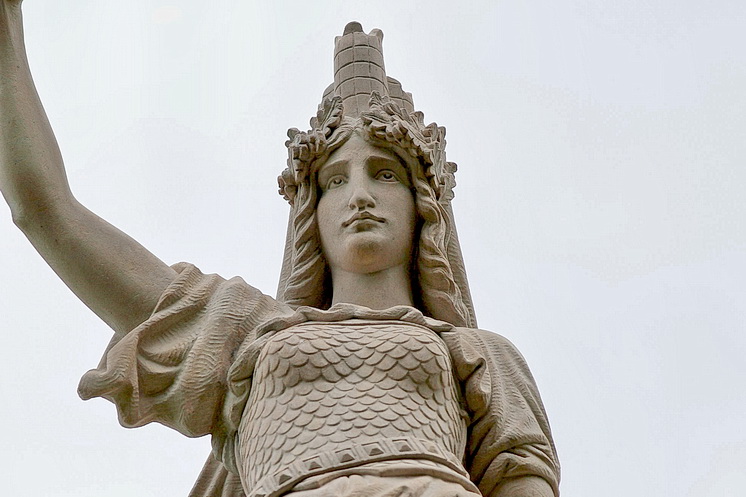Gallery renovation of the original Austria statue

All of the necessary works for the remediation of the statue were done as a part of the renovation process during particular phases (careful cleaning, bio-remediation, reduction of hygroscopic salts, removal of crust, consolidation of the stone material, removal of secondary additions, glueing together of fragments that have broken off, removal of corroded armatures, injecting of cracks, local filling in of material in artificial stone, local colour retouching etc.).
The goal of the renovation plan was the overall conservation of the statue and mainly the solving of the issue of inappropriate secondary works. The reason for that was the renewal of sculptural and aesthetic authenticity of the statue which should in the future be used mainly for gallery reasons. The whole process of the renovation of the Austria statue was mapped and documented in the final renovation report.
Statue renovation of the Austria statue (creating a copy)
Because of the scanning and later making of an ideal copy of the Austria statue, it was necessary to provide a thorough photo-documentation of the whole of the statue and its details, and also to do, in a reversible material, model corrections of damaged or missing details directly on the original. The head of Austria had been, before the removal of secondary additions, formed and cast into plaster. Renovation of the destroyed right arm was also done. The arm was also formed and a plaster cast was made.
3D scanner mapping and subsequent robot machining
After all of these necessary works, the whole surface of the sculpture and preserved fragments were mapped with a 3D scanner. The industrial optical 3D scanner from the line ATOS Compact Scan was used for this purpose. It allows you to make three-dimensional data and it is currently widely used in many industrial fields. The produced data was needed to be sequenced in a computer programme ATOS Professional, the output was a polygonal network. FREE FORM MODELLING software was used to work with this polygonal network. The haptic arm PHANTUM DESKTOP was used to make some modelling corrections. 3D data in STL format was the output. The data were loaded into the CAD/CAM Tebis system. It has generated the lines for the machining tools which were then converted for the robotic arm of the KUKA company. A rough shape of the statue of Austria was made at the Vocational Secondary School of Sculpture and Stonework by machining of a slab of stone from the Hořice sandstone, meant for other manual working. The data processing and subsequent machining by the robot was done under a professional supervision of a schooling worker from the MCAE Systems.
All of the work connected with the renovation of the original of the statue of Austria and the final sculpture works of the renovated statue, were done by Mgr. Martina Hozová, an academic sculptor. She would like to thank, in this way, to everybody who has helped her with the creation of the statue of Austria. Namely to the director of SPŠKS, J. Moravec, MSc. and his colleagues, Ing. P. Barták, PhD. (Kámen Ostroměř), and the representatives of NPÚ of the town Hradec Králové and the workers of MCAE Systems from Kuřim at Brno (Ing. Drápela, P. Stejskal, O. Helan, and Ing. J. Zouhar, PhD). Special thanks belongs to Ing. R. Teichman, for his substancial effort during the coordination of the whole operation. Photography from the archives of Mgr. Martina Hozová, academic sculptor.
Source: Lomy a těžba
